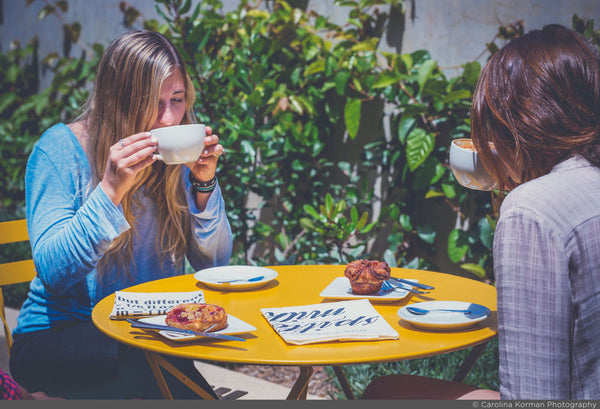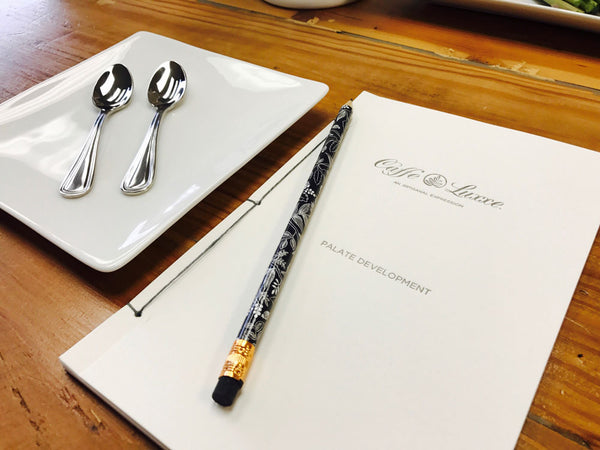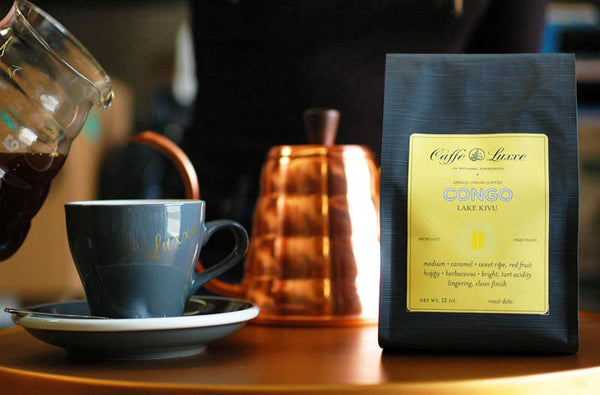
Coffee is a dynamic beverage, offering a wide range of exciting flavors and aromas to enjoy. A well-developed palate – your ability to identify and appreciate tastes, flavors, and aromas – allows you to experience the depth, complexity, and uniqueness that each coffee has. While our baristi go through an intensive Palate Development course, we wanted to share a few ways for you to improve your palate at home. By following these 7 tips, you’ll be on your way to developing your palate and enjoying all the delightful flavors and aromas in coffee!

1. Start with the Basics
With over 800 unique aromatic compounds contributing to the flavors and aromas found in coffee, it’s very easy to get overwhelmed with the countless ways coffee profiles are identified and described. It’s best to take a few steps back and start off focusing on the five basic tastes: sweet, sour, salty, bitter, and umami (also known as savory).
Take a sip of your coffee, and ask yourself if the coffee has sweetness, sourness, bitterness, etc…
Just look for the presence of those tastes to start. Once you’re able to confidently identify them, start asking yourself how sweet, sour, bitter, salty, or savory the coffee is.
Eventually, as you feel more confident with these basic tastes, you’ll be able to take it a step further and ask yourself what kind of sweetness (or sourness or bitterness, etc...) you’re tasting. For example, you can go from tasting that a coffee has sweetness, to tasting that it has a chocolate sweetness, or that it not only has sourness, but a lemon sourness more specifically.

2. Practice Active Tasting
Developing your palate is similar to playing a sport in that the more your practice at it, the better at it you’ll become. Every time you eat or drink something, you’re giving yourself an opportunity to develop your palate by actively tasting.
As you eat and drink throughout the day, take a few moments to focus on what you’re tasting, and really think about the flavors your food has. Instead of just eating an apple, for example, think about its sweetness, acidity, bitterness, texture . . .
What flavors or qualities do you notice that make an apple taste like an apple? If you needed to describe what an apple tasted like to someone who had never tried one, how would you do it? Actively tasting helps you think in a more flavor-forward way, which will also help you to…

3. Build a Flavor Library
More often than not, we use non-coffee foods to describe the flavors we find in coffee. We draw from our experiences with and knowledge of these foods to help us experience and enjoy flavors and aromas coffee. Actively tasting foods is like building a mental flavor library, giving your tongue more experiences to draw from when tasting coffees. The bigger your library is, the easier it will be to identify unique flavors you find in coffee.
For example, if a coffee has a distinctly apricot-like flavor, but you had never eaten an apricot, you wouldn’t be able to experience or identify as well as you would if you had eaten an apricot. Building your library gives you more reference points when drinking coffee, and the best way to build that library is to regularly actively taste new foods.

4. Keep a Coffee Journal
Keep a log of the coffees you taste, and write down what flavors you’ve found in them. While journaling in and of itself won’t improve your palate, the process of translating what you’re tasting into words will. It helps you to think (and taste!) more actively, as you search for the right words to define what you’re tasting.
As your palate develops, you’ll find you’re able to become more descriptive with the language you use. Journaling also provides you with a history of your tasting journey; re-reading your logs will help you see how much progress you’ve made!

5. Pay Attention to Flavor Descriptors
Whenever we develop a new coffee here at Caffe Luxxe, our we fine tune the roasting technique to bring out the most pleasant tastes, and our expert tasters write down all of the flavors and characteristics they identify in the coffee. We include these descriptors on all of our bags to give you an idea of what to taste for. These descriptors are an excellent tool to use to develop your palate. It’s a lot easier to find unique flavors when you know what to look for! Make sure to read what our team has found in each of our coffees, and challenge yourself to find those flavors as well.
You can even take that a step further, and start to learn what factors contribute to flavors that you like (or dislike) most. For example, you may find that you gravitate toward the fruitiness of a Naturally Processed coffees or the complex acidity of Kenyan coffees.
Becoming a more informed coffee drinker will help make sure you’re enjoying the most out of every cup!

6. Completely Ignore the Flavor Descriptors
What?! Seems completely counter-intuitive, right? But let us explain. As your palate becomes refined – through active tasting, and building your flavor library – you’ll need external reference points less and less. Ignoring the flavor descriptors gives you an opportunity to discover the flavors on your own, and the more often you challenge yourself to find those flavors, the better developed your palate will become. Plus, you can always read the descriptors after you’ve tasted the coffee on your own, and see if the flavors you found match up with the flavors we found. You may surprise yourself and find that you identified the same flavors that we did!

7. Taste a Lot of Coffee(s)
The more coffees you taste, the better you’ll understand the breadth of flavors that coffee has to offer, and the more opportunities you’ll give yourself to find new and unique flavors. You’ll also discover a more profound sense of what you like or dislike, and why.
Try a different bag of coffee each week to experience new flavors. Take it a step further, and taste different coffees back to back. Identify the differences and similarities between them. What makes each coffee stand out (or what makes it not stand out)? You can even taste coffees blindly to remove any preconceived notion of what you’re supposed to taste, and discover the flavors on your own.
Ultimately, the best way to get better at tasting coffee is to taste coffee. A lot of it. So, start brewing and tasting all the coffees you can! We recommend checking out our collection of Caffe Luxxe Single Origins to get started on your palate development journey. You can make it even easier to regularly discover new flavors by signing up for our Single Origin Subscription, and get a different coffee automatically shipped to you on a weekly, bi-weekly, or monthly basis!


























